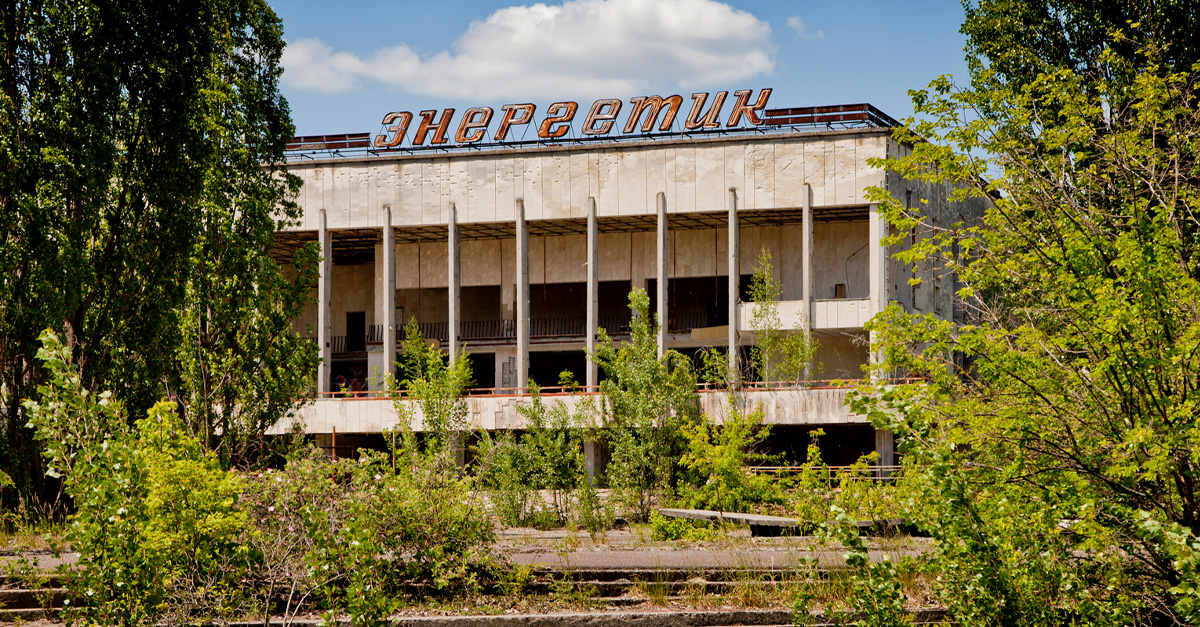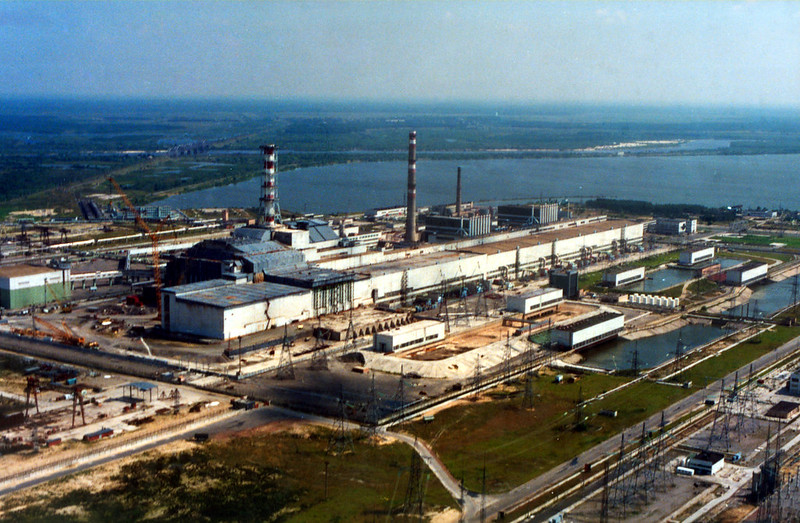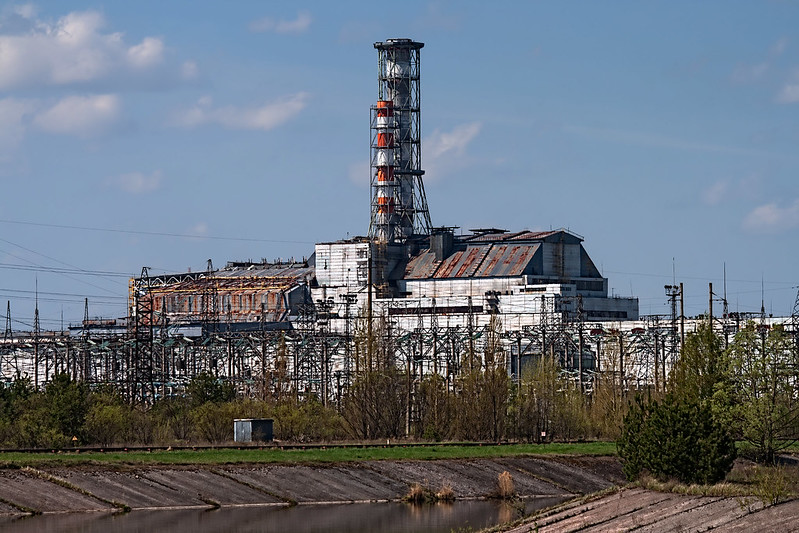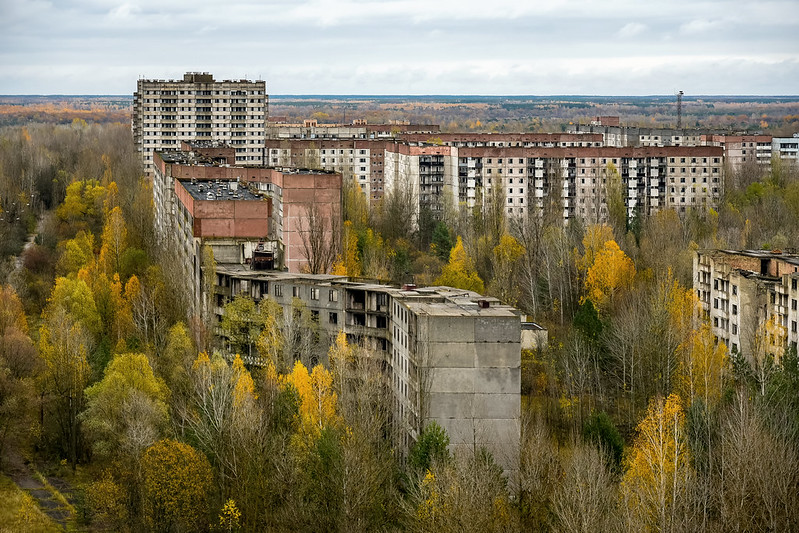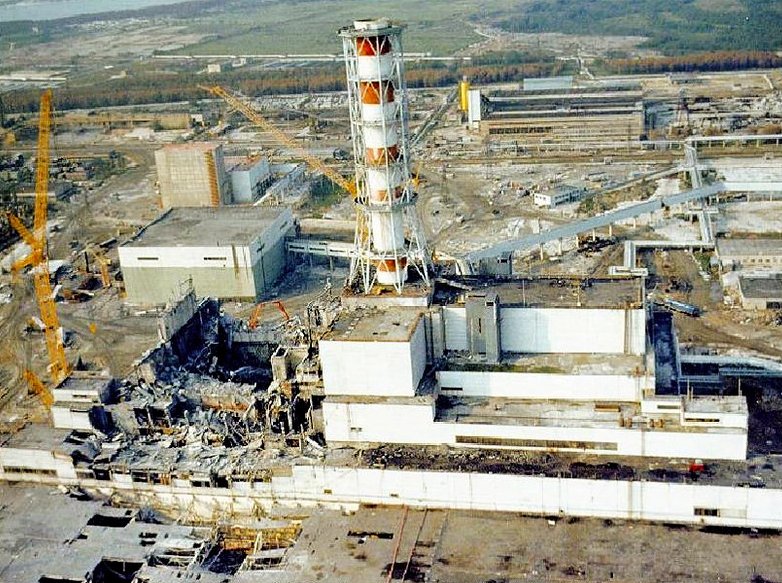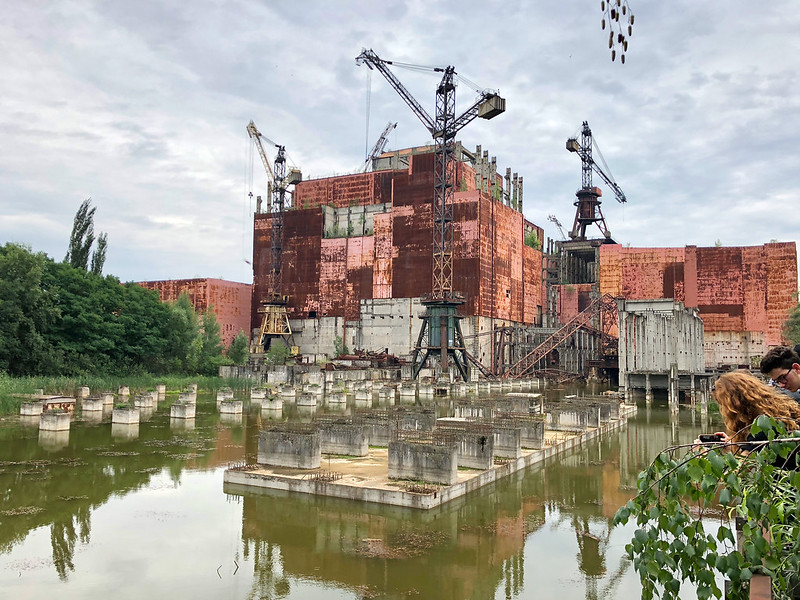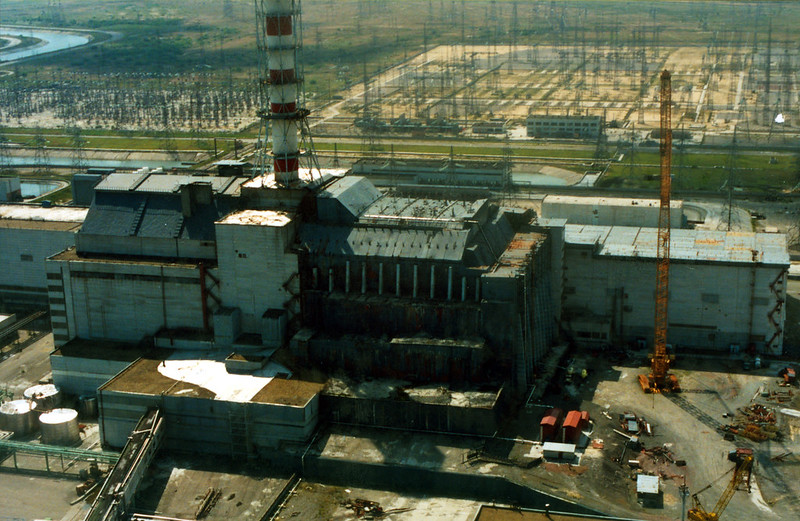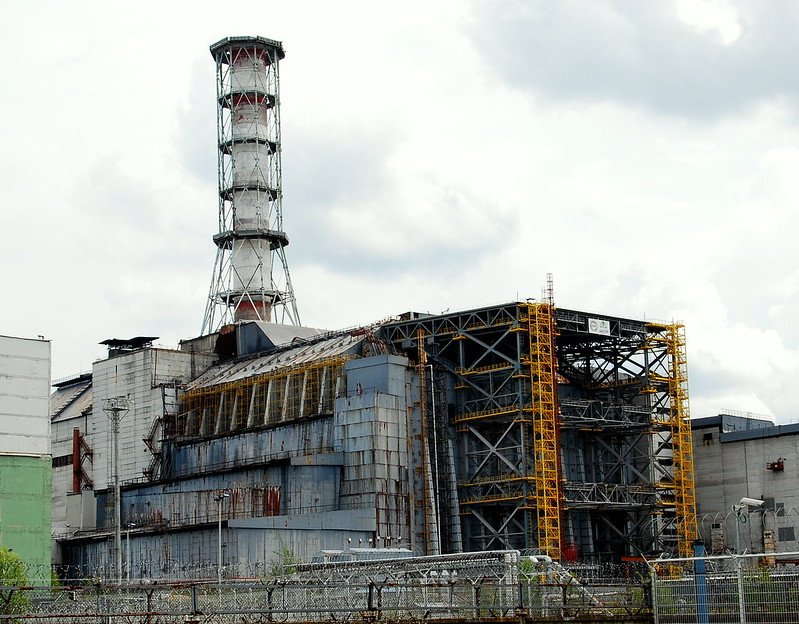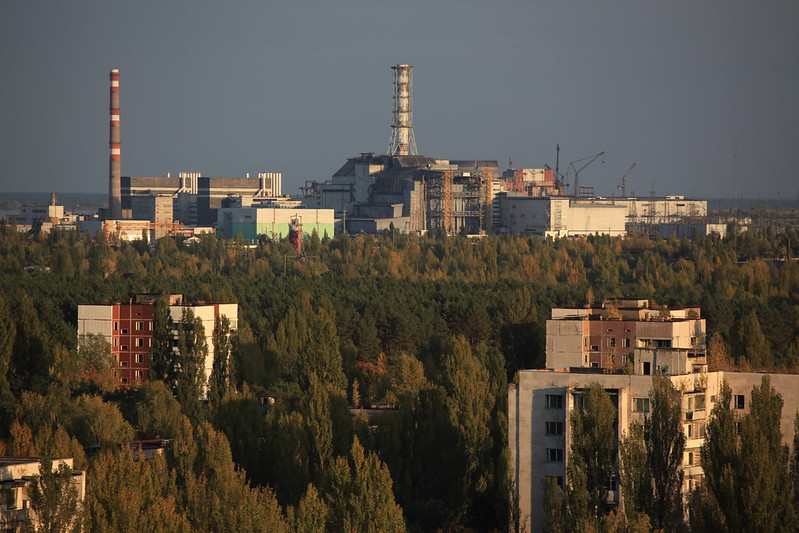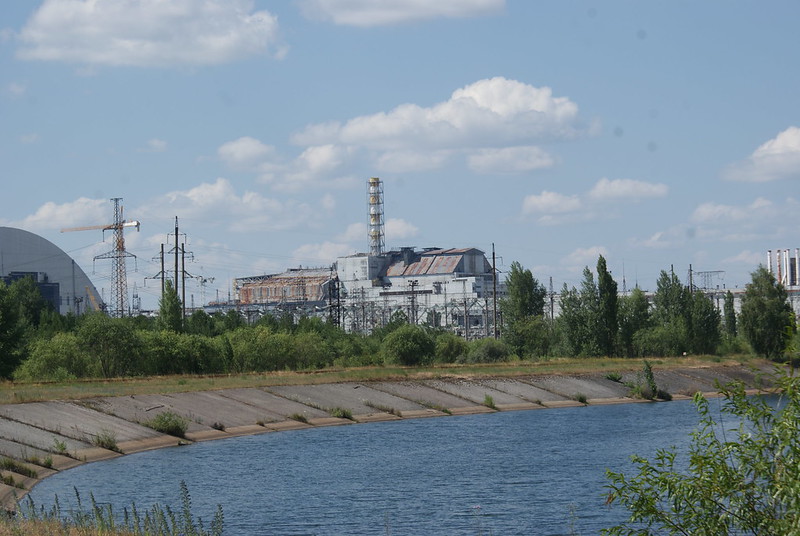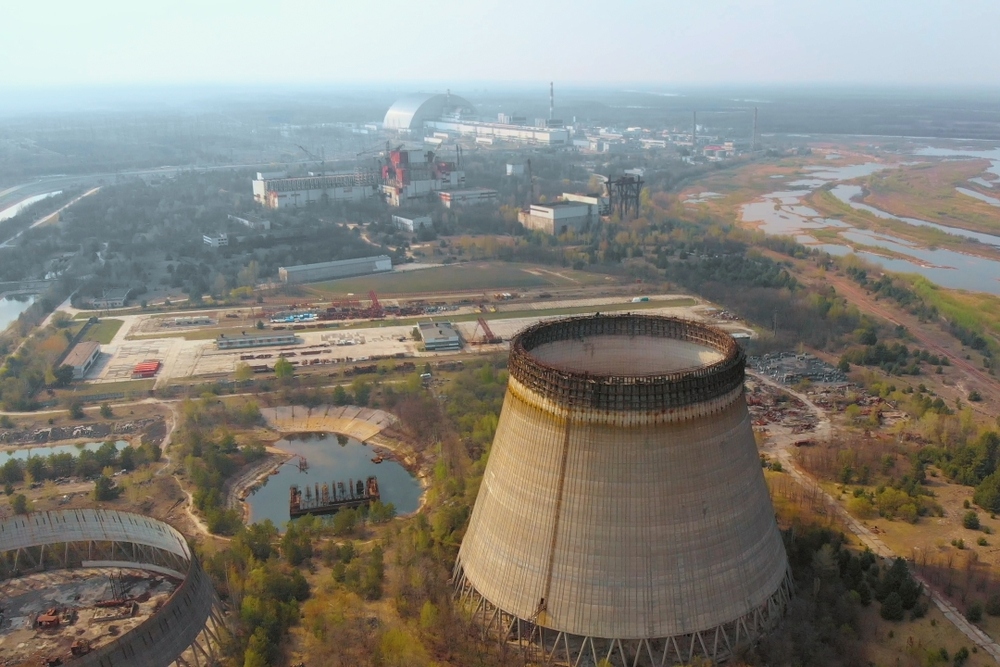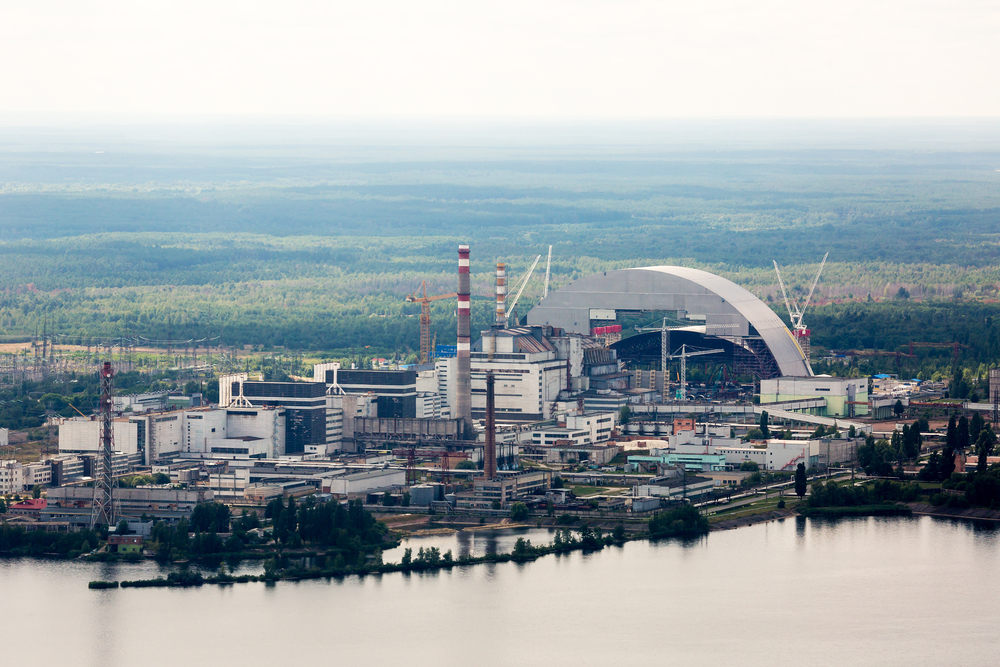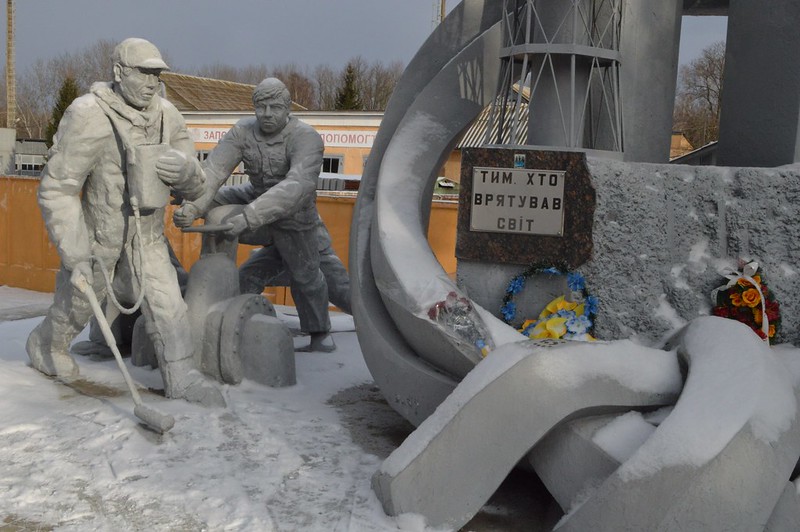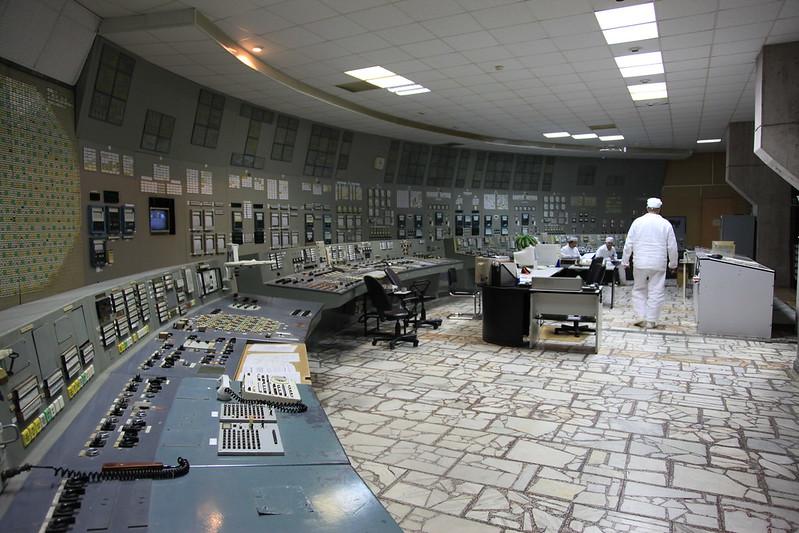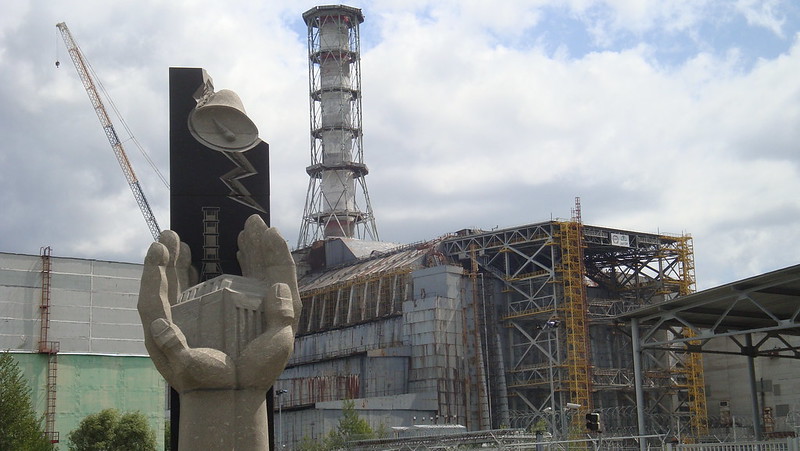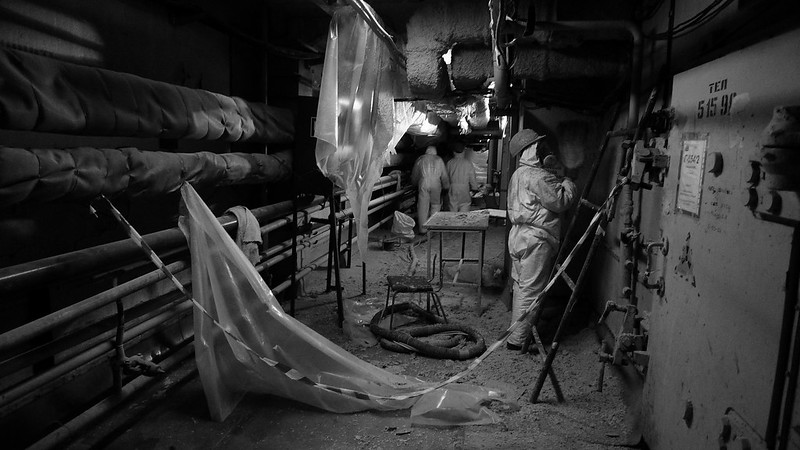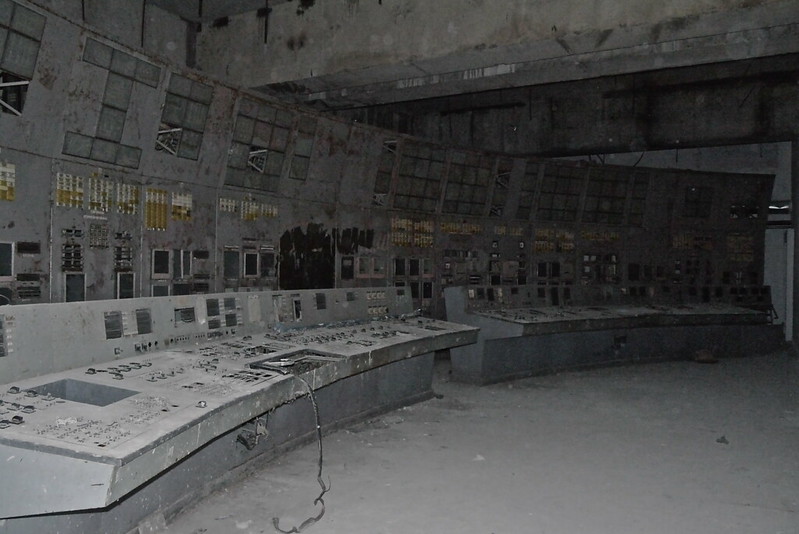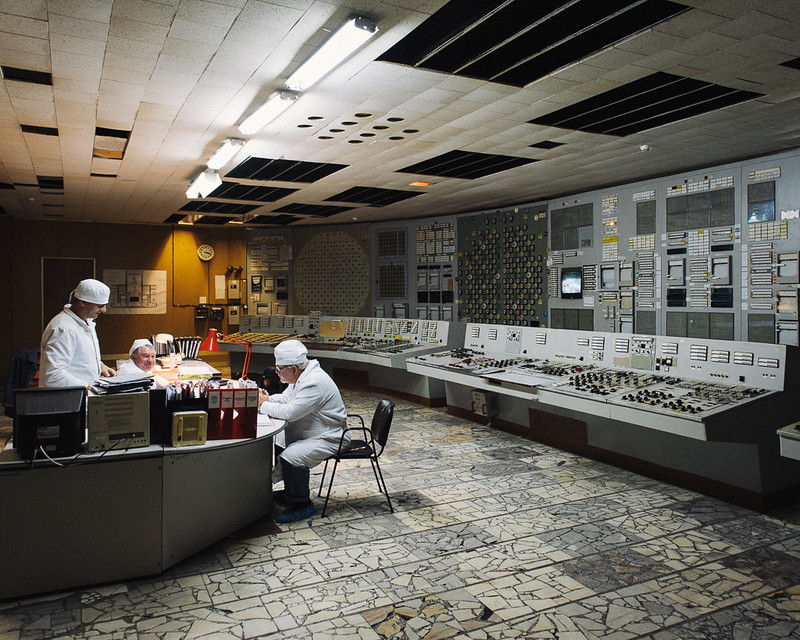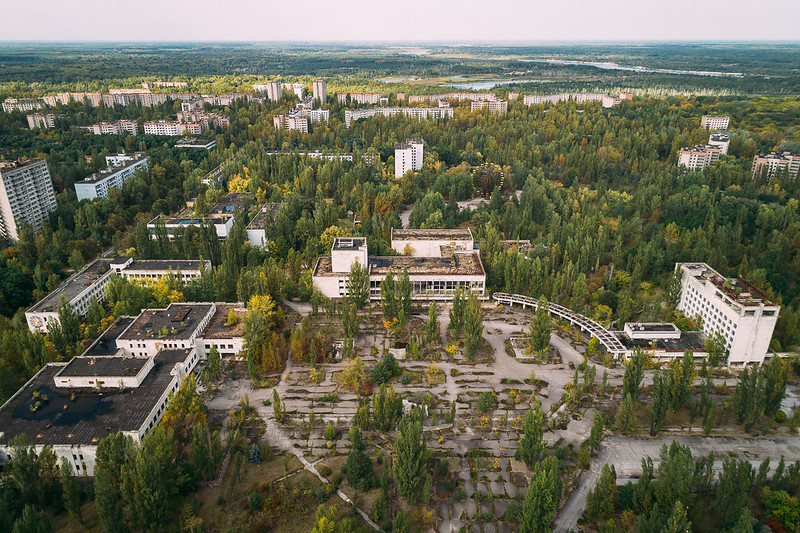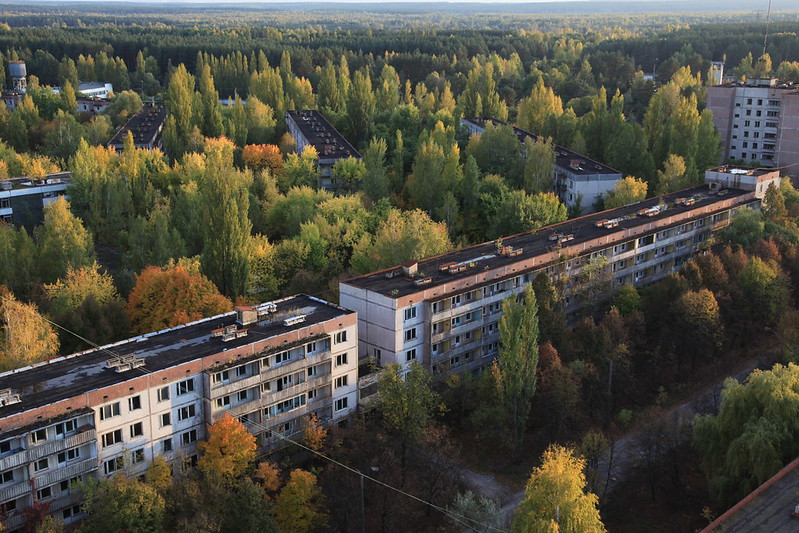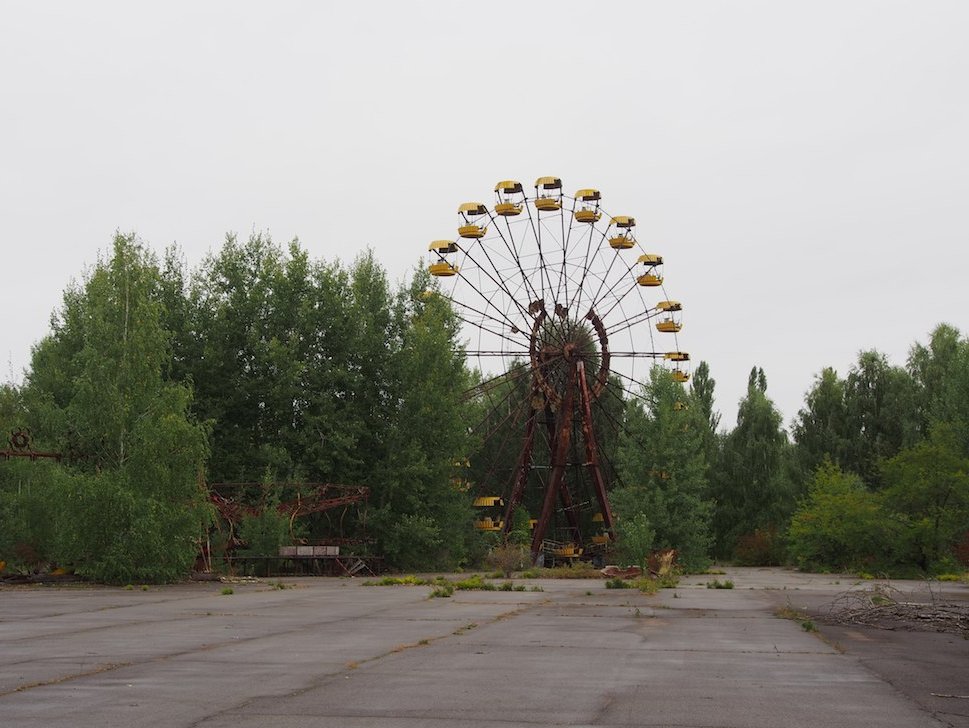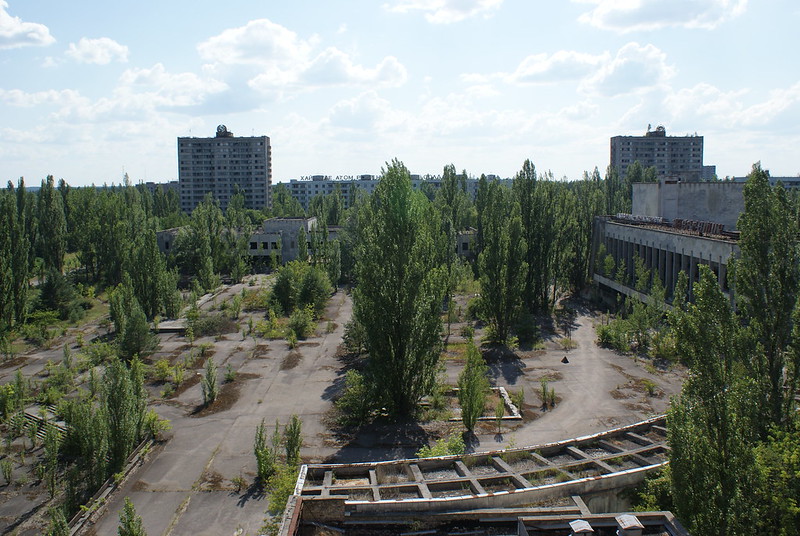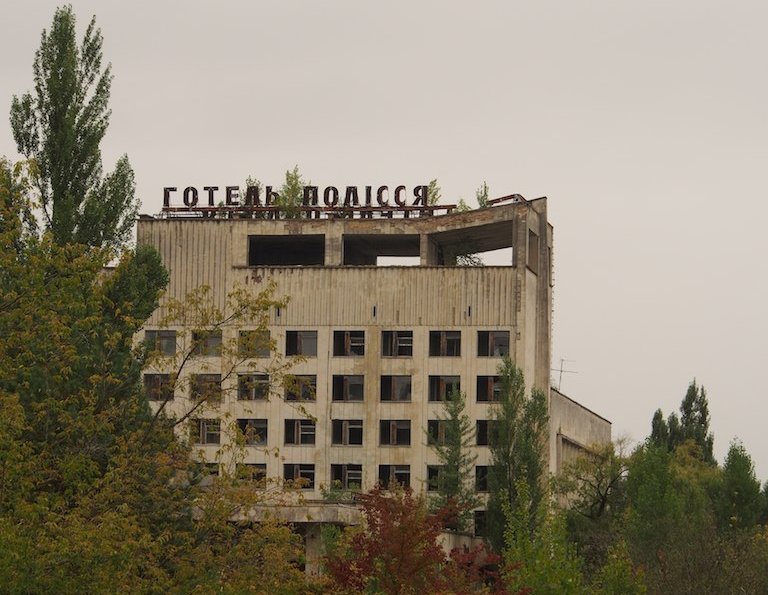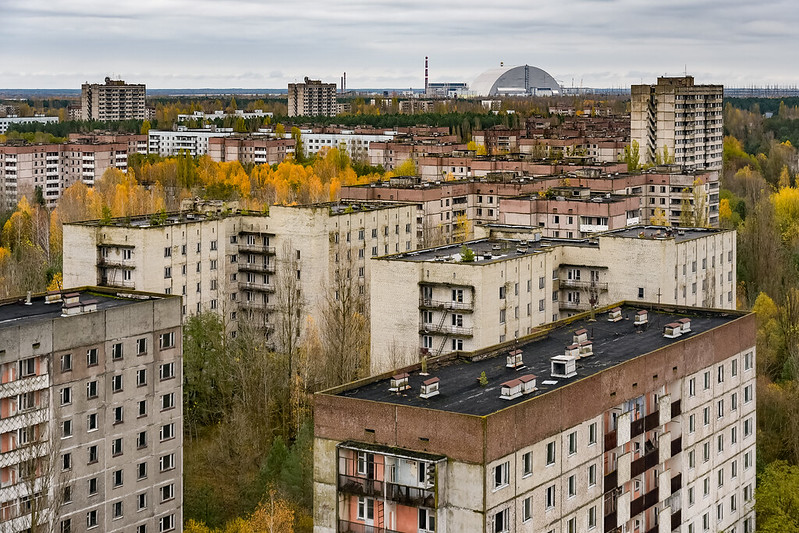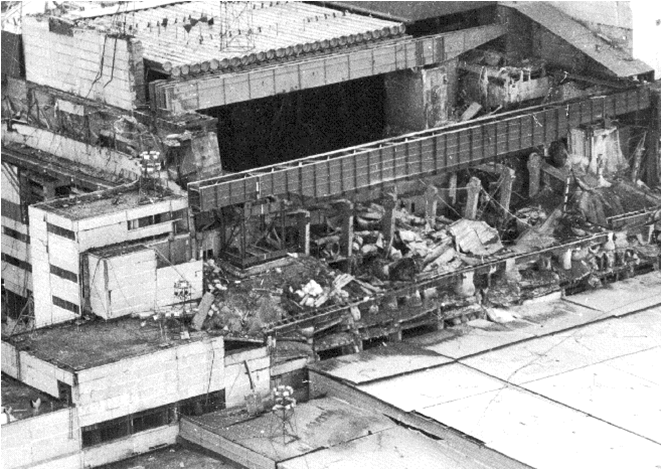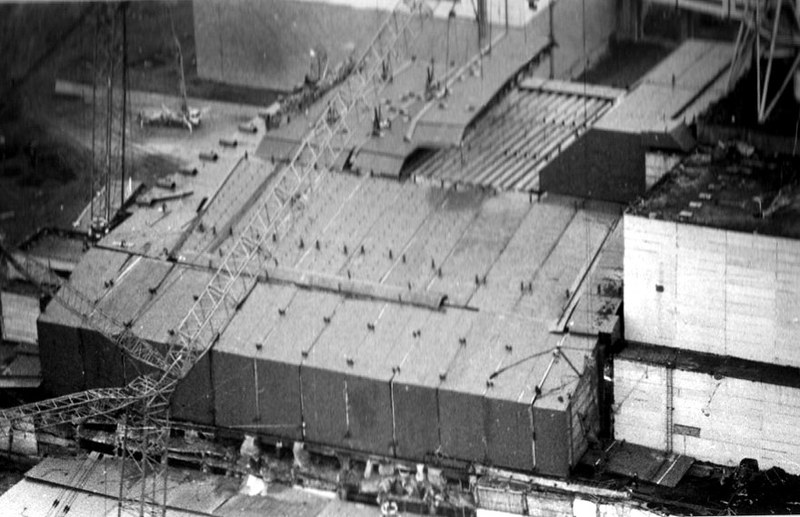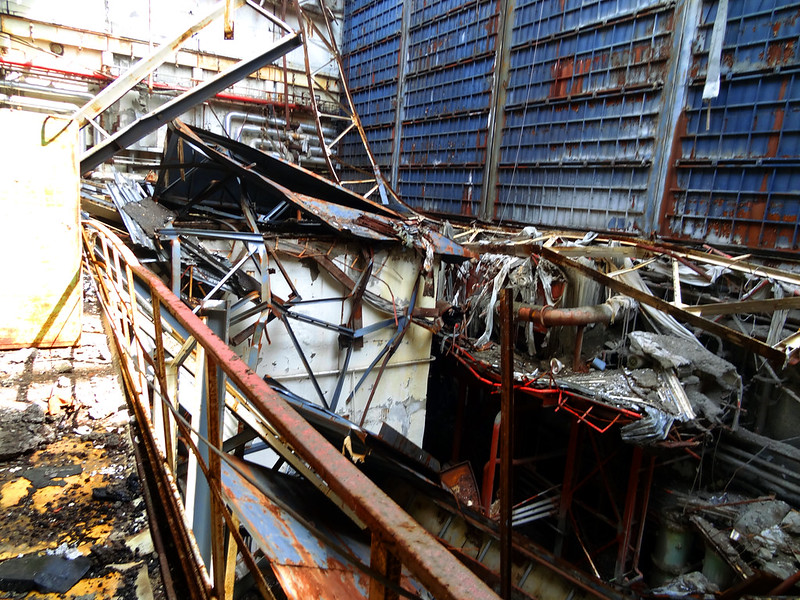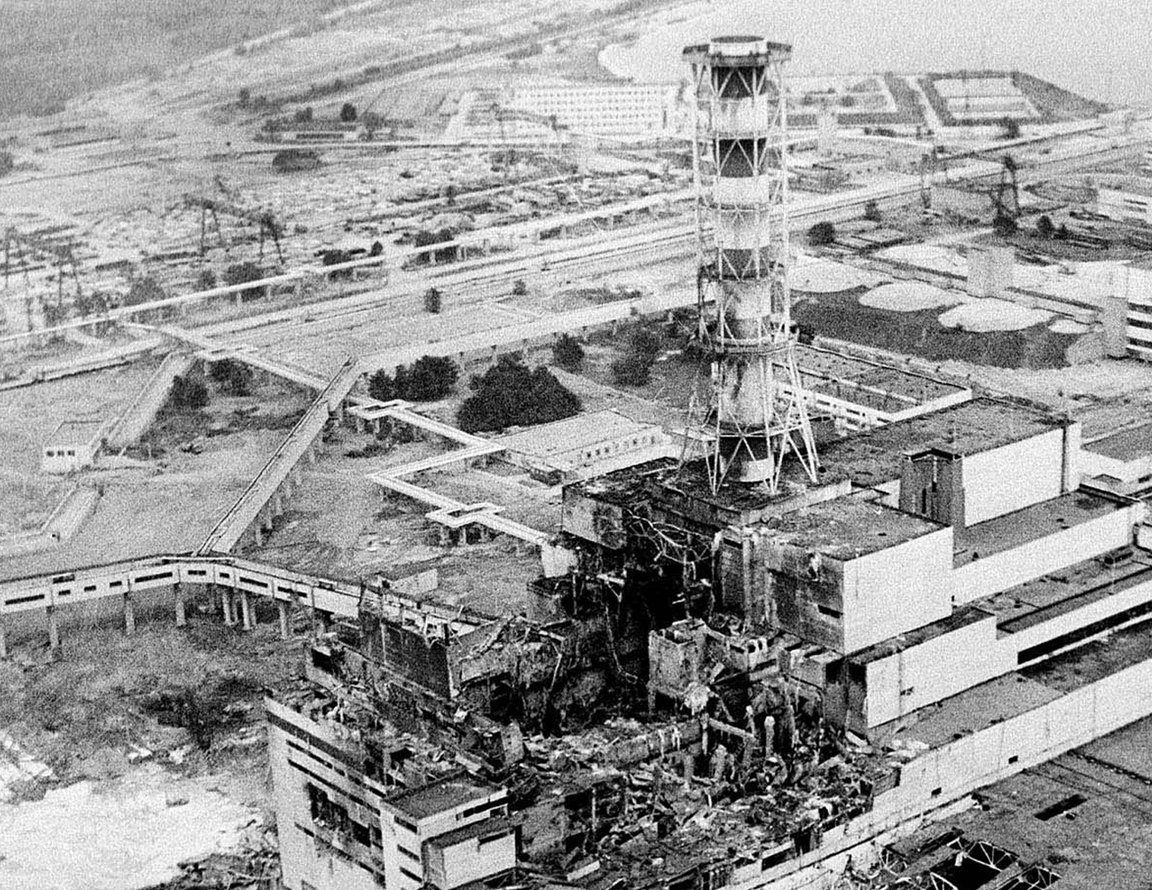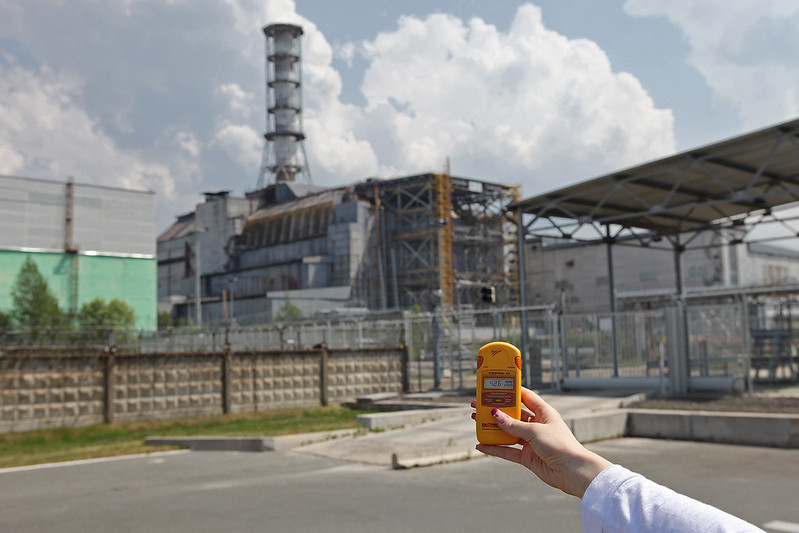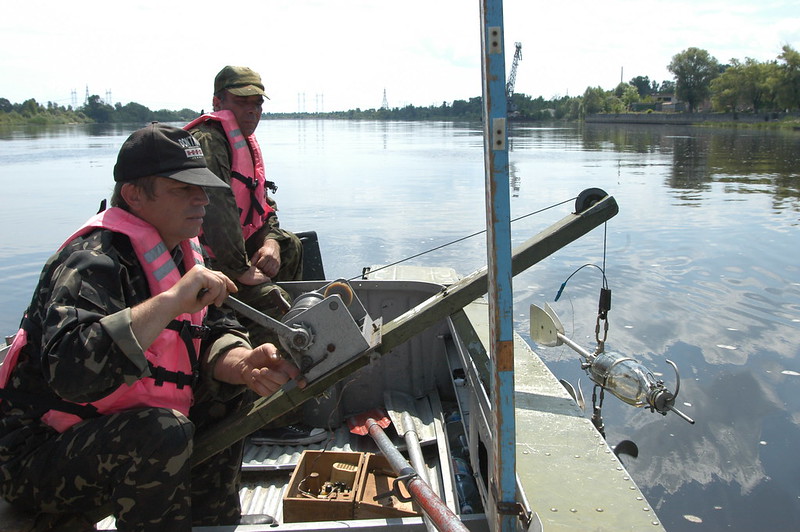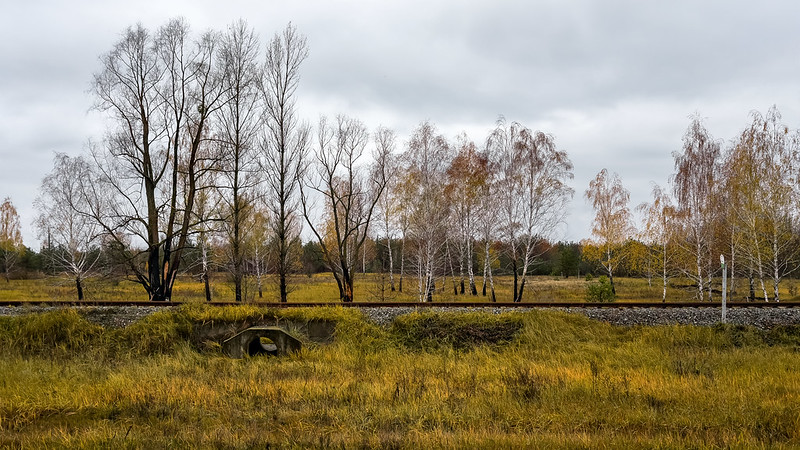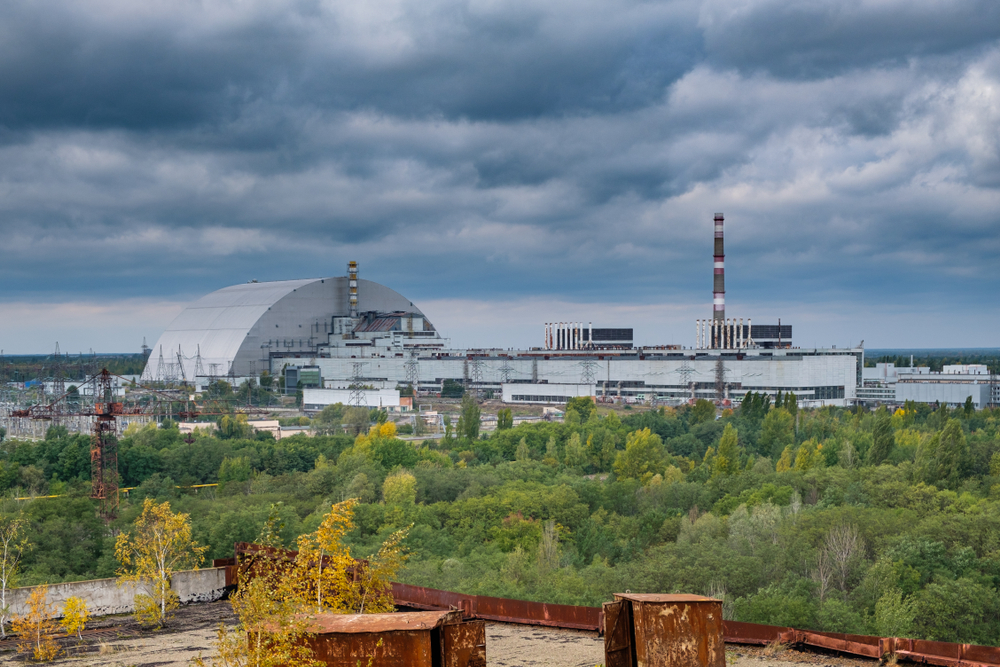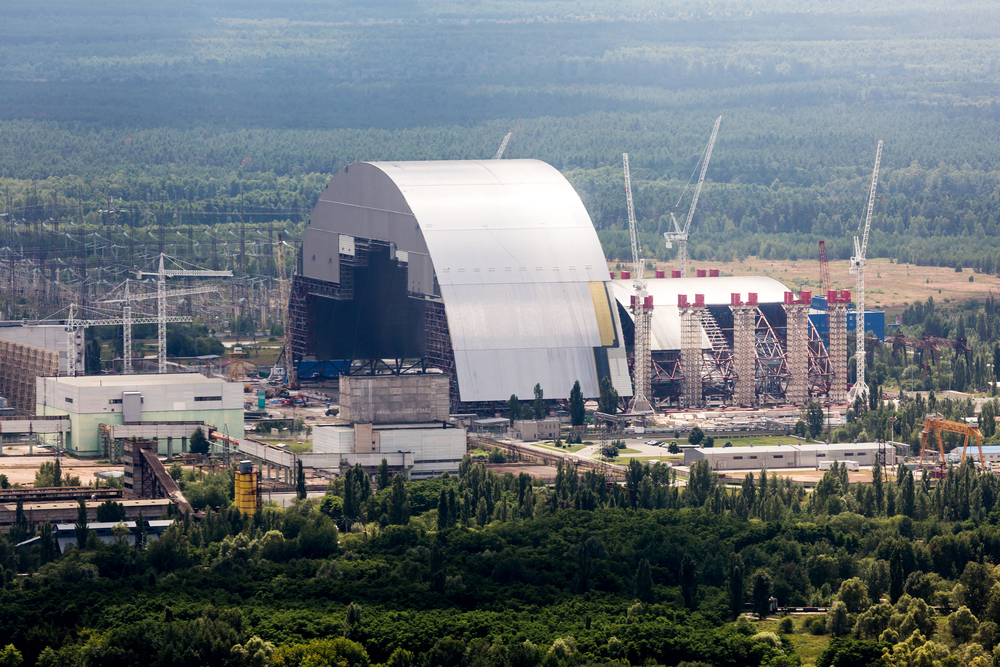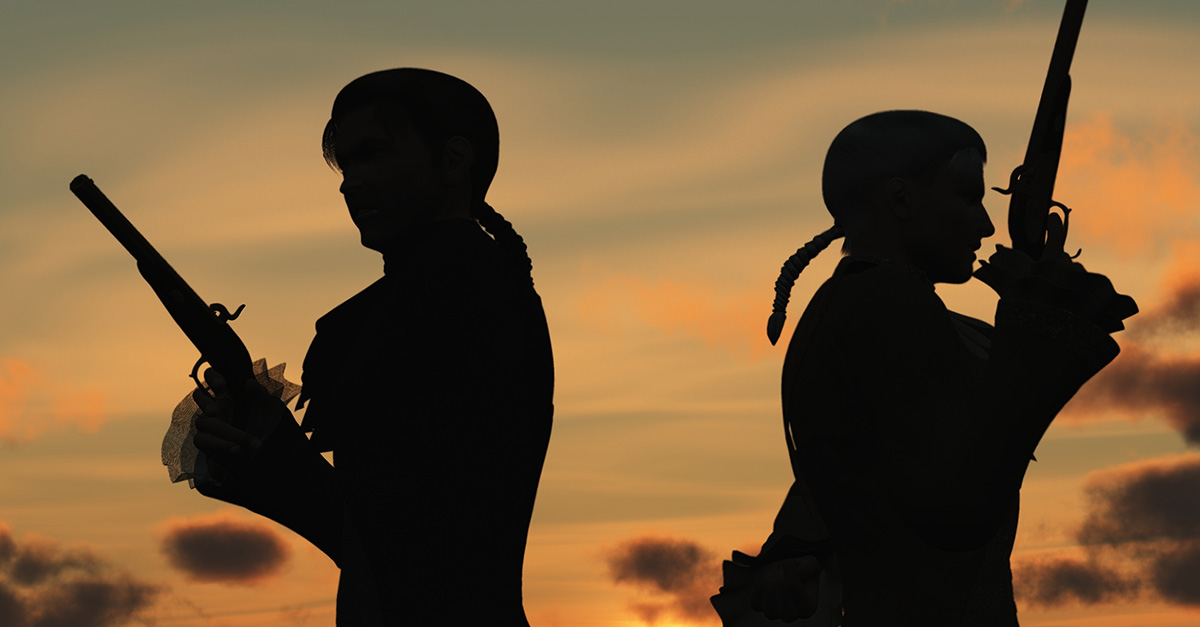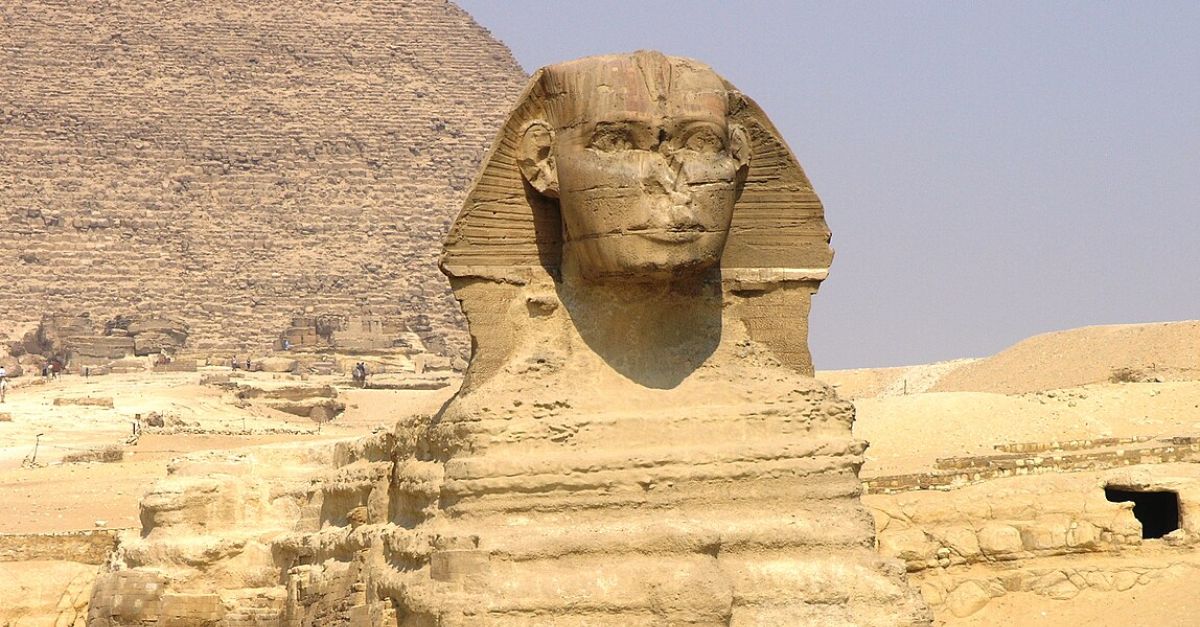Disaster
The nuclear disaster at Chernobyl left the the once-bustling area around it uninhabitable—so what does it look like now that nature has spent the last 40 years trying to take it back?

The Plant Was Never Finished
Construction of the Chernobyl Nuclear Power Plant began in Northern Ukraine in 1972. It was meant to have 12 units by the time construction finished, which would have made it the largest nuclear power station in the world.
Only four reactors were ever completed.
There Were Four Reactors
At the time of the catastrophic meltdown, Chernobyl NPP had four working RBMK-1000 reactors. The four of them produced around 10% of Ukraine's electricity.
They Built A City
The USSR built an entire city outside of all their nuclear power plants to house the workers and their families. At Chernobyl, that city was called Pripyat.
1, 2, 3, 4
The first reactor at Chernobyl came online in 1977. No. 2 followed the next year in 1978, then No. 3 in 1981, and No.4 in 1983.
They Were Expanding
The Soviets had already laid out the sites for Reactors No. 5 and 6. Construction on No. 5 was 70% complete, and it was scheduled to start operation on November 8, 1986. That never happened.
"State Of The Art"
The first two nuclear reactors were first-generation Soviet technology, while the third and fourth were second-generation. That meant they had a more secure containment structure. Not like it made a difference.
 IAEA Imagebank, CC BY-SA 2.0, Wikimedia Commons
IAEA Imagebank, CC BY-SA 2.0, Wikimedia Commons
They Already Had A Meltdown
The catastrophic meltdown of 1984 wasn't even the first meltdown at the power plant. Reactor 1 suffered a partial core meltdown in 1982.
No One Even Noticed
A faulty cooling valve made the uranium in the reactor overheat. There were no casualties, but the negligence of the operators meant that no one even noticed the meltdown for hours, allowing radioactive material to leak out into the environment.
They Kept Quiet
It took years before Soviet officials even admitted there had been an incident, even though Reactor No. 1 was out of operation for eight months. But what about the incidents they never admitted to?
 Paweł 'pbm' Szubert, CC BY-SA 3.0, Wikimedia Commons
Paweł 'pbm' Szubert, CC BY-SA 3.0, Wikimedia Commons
They Talked Big
The Soviet Union bragged about their state of the art second-generation facilities on the international stage—but documents declassified in Ukraine in 2021 tell a very different story.
They Plant Wasn't Safe
There were serious incidents in both the third and fourth reactors in 1984—two years before the catastrophic meltdown—but government officials kept them quiet.
The Most Dangerous Power Plant
The documents prove that even as far back as 1983, officials in Moscow knew that Chernobyl was "one of the most dangerous nuclear power plants in the USSR".
The Reactor Wasn't Working Properly
Despite their bragging, the second generation units struggled to perform as intended. After a series of unsuccessful tests, the power plant ran one more safety test on Reactor No. 4.
Spoiler alert: It wasn't safe.
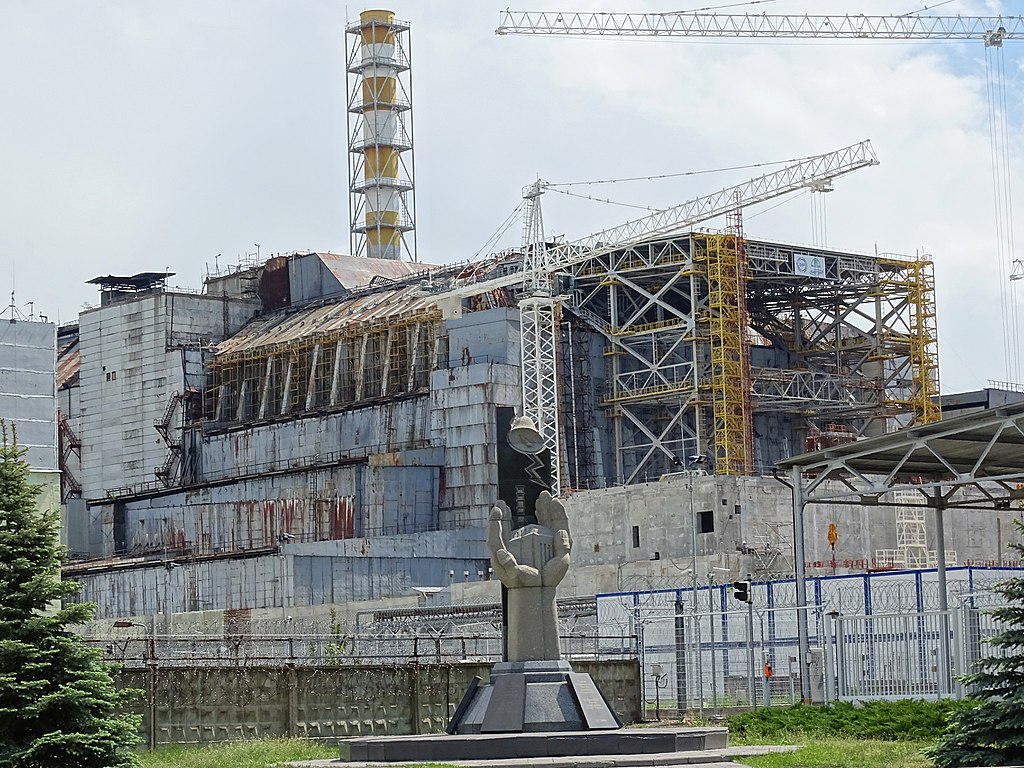 Adam Jones, CC BY-SA 2.0, Wikimedia Commons
Adam Jones, CC BY-SA 2.0, Wikimedia Commons
There Was An Emergency Shutdown
At 01:23:04 on April 26, 1986, the safety test began. At 01:23:40, for an unknown reason, an operator initiated an emergency shutdown, or "scram".
 Ingmar Runge, CC BY-SA 3.0, Wikimedia Commons
Ingmar Runge, CC BY-SA 3.0, Wikimedia Commons
Whoever Did It Is Gone
We still don't know the why the scram was initiated. The two men who would have made that decision both died before they told anyone. But we know what happened next.
Rapid Cooldown
The idea behind a scram was that control rods would rapidly inject water into the core, quickly cooling it and ending the reaction. But there was a MAJOR flaw in the design.
It Had The Reverse Effect
For a brief moment, right as it started, a scram could actually speed up the nuclear reaction in the core. That's a big problem.
Overdrive
For an instant after the scram started, the reactor jumped to 10 times its normal output. The control panel broke after that. Not that it mattered anymore.
Radioactive Explosion
In the blink of an eye, the reactor exploded. Radioactive core material—mere seconds ago an active fission reaction—was jettisoned into the atmosphere with the force of 225 tons of TNT.
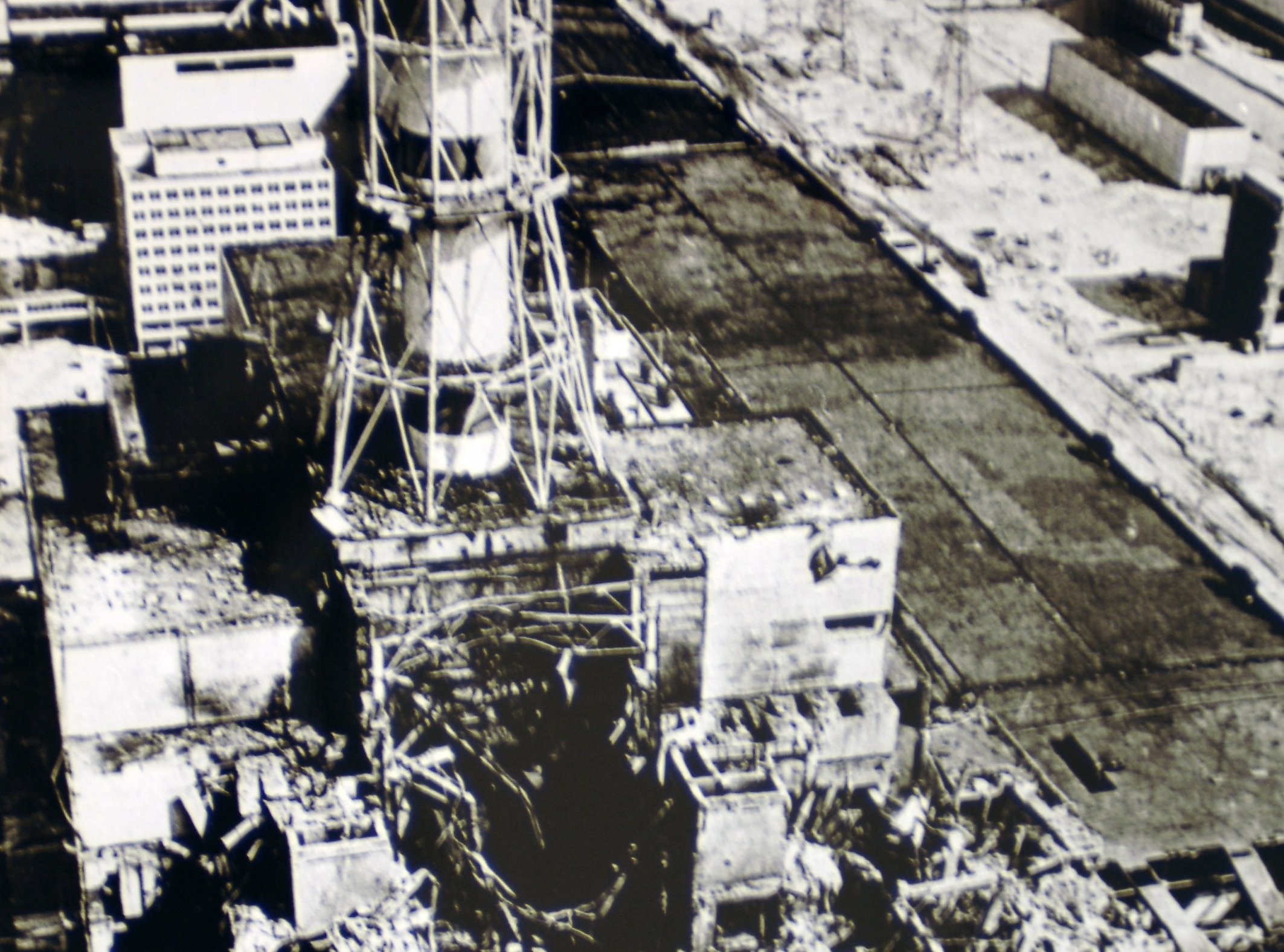 IAEA Imagebank, CC BY-SA 2.0, Wikimedia Commons
IAEA Imagebank, CC BY-SA 2.0, Wikimedia Commons
The Air Was Glowing
Alexander Yuvchenko, a survivor of the disaster, said that the reactor hall was filled with a beautiful, laser-like beam of blinding blue light, caused by ions in the air, that seemed to be "flooding up into infinity".
Radiation + Fire = Bad
When it's bad, it can always get worse. The Soviets used combustible tar in the roof of the reactor building. A raging fire quickly made the nightmare scenario even worse.
They Tried To Make Them Keep Working
The chief working the night shift at Reactor No. 3 wanted to shut down and evacuate, but he was given respirators and potassium iodide tablets for his team and told to keep working.
He lasted until 5 am before breaking orders, shutting down the reactor, and evacuating.
The Firefighters Didn't Know What They Were Getting Into
The firefighters who arrived to fight the blaze were not told about the levels of radiation. The first on the scene, Volodymyr Pravyk, succumbed to acute radiation sickness on May 11, 1986. He was not the last.
 Чорнобильська АЕС, Wikimedia Commons
Чорнобильська АЕС, Wikimedia Commons
People Started Getting Sick
The evacuation needed to begin immediately, but the people of Pripyat were not initially notified. But within just a few hours of the explosion, people started falling seriously ill.
Ukrainian Officials Were In The Dark
Despite happening in Ukraine, Moscow ran the plant, so Ukrainian authorities who could have offered aid were kept in the dark.
The Evacuation Started Over A Day Later
In the early morning of April 27, 36 hours after the explosion, authorities finally ordered the evacuation of Pripyat.
They Were Told They'd Be Gone Three Days
The residents of Pripyat were told to only bring what was absolutely necessary, and that they would be able to return in three days. No one ever went back.
The Exclusion Zone
The Chernobyl disaster was still going to get a lot worse before it got better. 10 days after the explosion, the USSR expanded the evacuation area to 30 km around the site. The Chernobyl Nuclear Power Plant Exclusion Zone has existed ever since.
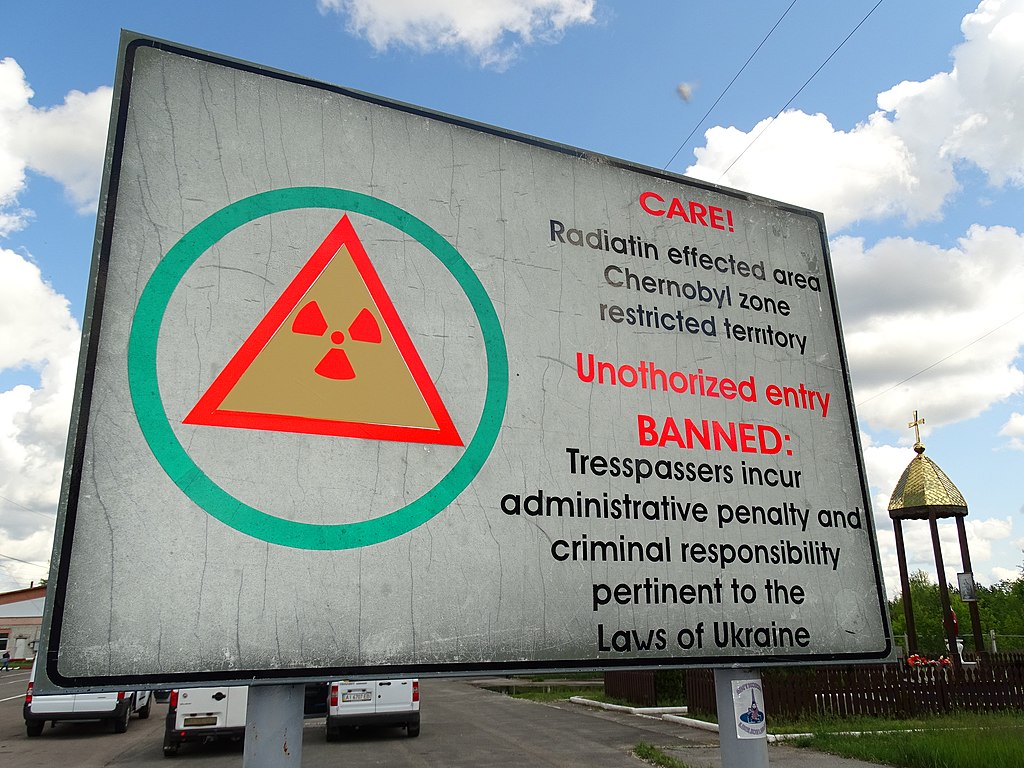 Adam Jones, CC BY-SA 2.0, Wikimedia Commons
Adam Jones, CC BY-SA 2.0, Wikimedia Commons
"A Minor Accident"
At first, Soviet officials admitted only that there had been a "minor accident". By the time the evacuation of over 100,000 people was under way, it was hard to keep saying the accident was that "minor".
A 20-Second Announcement
On April 20, the Soviet news programme Vremya made the following, 20-second announcement: "There has been an accident at the Chernobyl Nuclear Power Plant. One of the nuclear reactors was damaged. The effects of the accident are being remedied. Assistance has been provided for any affected people. An investigative commission has been set up".
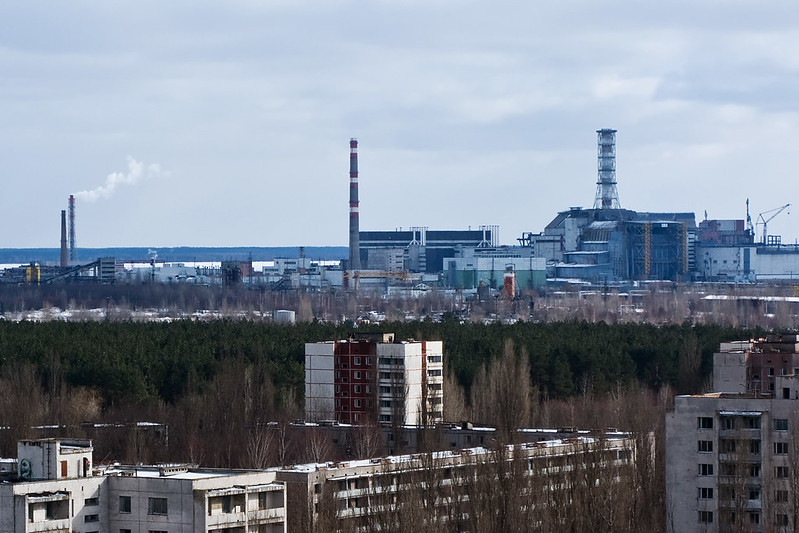 Pedro Caetano de Moura Pinheiro, Flickr
Pedro Caetano de Moura Pinheiro, Flickr
The Roof Is On Fire (And Radioactive)
The most dangerous part of the cleanup was trying to clear the approximately 100 tons of radioactive debris that was thrown onto the building's roof in the explosion.
The Sarcophagus
All the material had to be removed and collected before the construction of the sarcophagus: a massive concrete tomb to seal the reactor and radioactive debris within.
Cleanup Robots
The Soviets used 60 remote controlled robots to clear radioactive debris. Unfortunately, this was the 80s, so they almost all failed. The vast majority of the cleanup was performed by human workers: The Chernobyl Liquidators.
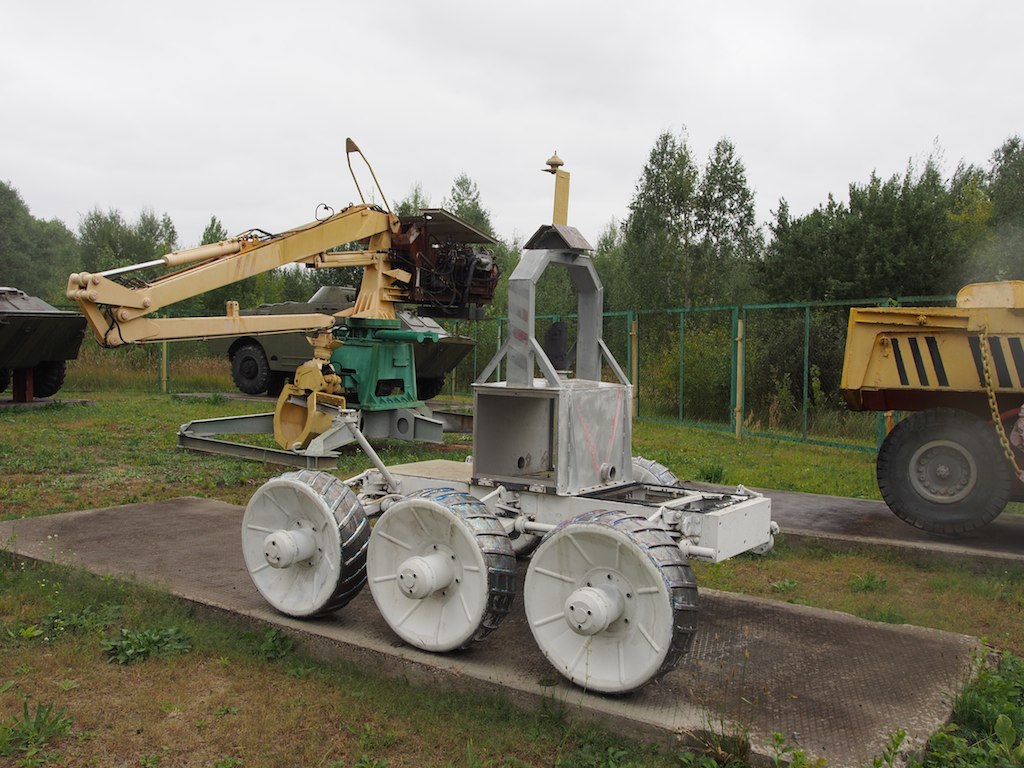 Clay Gilliland, CC BY-SA 2.0, Wikimedia Commons
Clay Gilliland, CC BY-SA 2.0, Wikimedia Commons
Bio-Robots
The Chernobyl liquidators called themselves "bio-robots," with their heavy military protective gear. But even with the gear, the liquidators could only work for 40-90 seconds before radiation levels got too high.
 Tom Skipp, CC BY-SA 4.0, Wikimedia Commons
Tom Skipp, CC BY-SA 4.0, Wikimedia Commons
Over The Limit
Each liquidator was only supposed to act as a "bio-robot" at most a single time. However, several of them report doing it five or six times.
Human Hands Did The Work
In the end, 90% of the material was removed by the 3,800 liquidators, who absorbed an average of 25 rem of radiation each.
They Sealed It Away
Design for the sarcophagus started within a month of the explosion, and construction was complete by November. The Chernobyl reactor was sealed off from the world forever. A bandaid on a gunshot wound.
1,000 Square Miles
The initial Chernobyl Nuclear Power Plant Exclusion Zone was a simple 30km radius around the plant. Eventually, it expanded to cover around 1,000 square miles. But that wasn't the end of the plant.
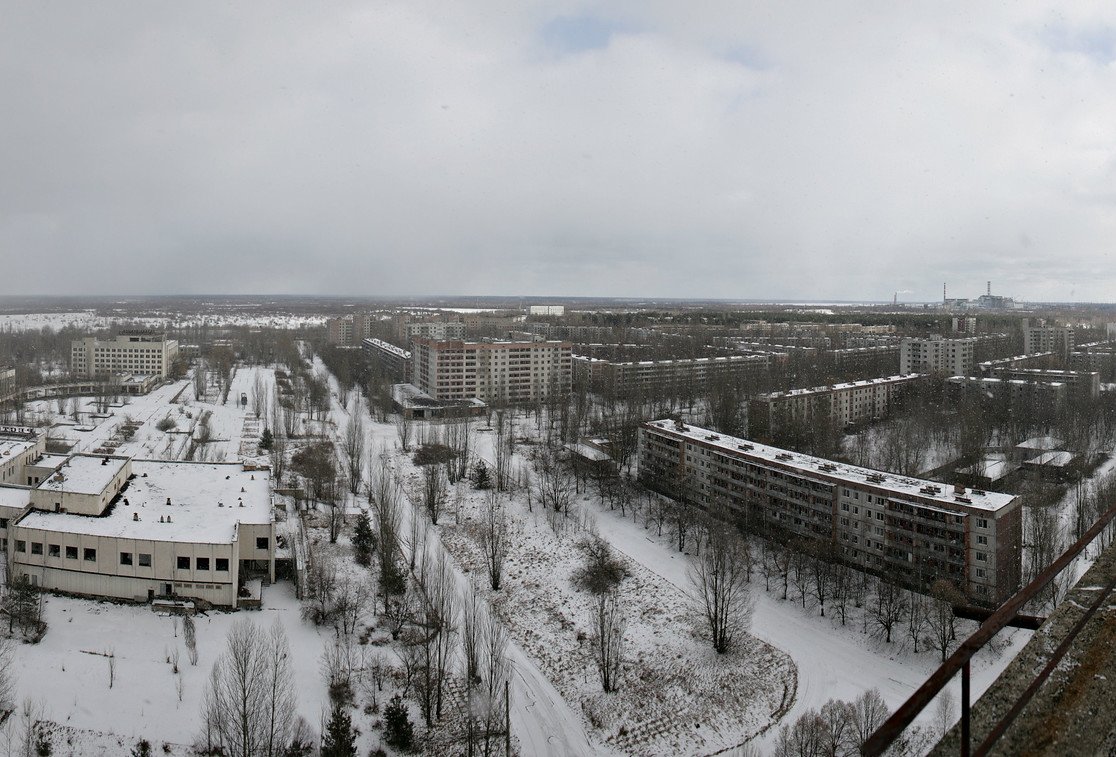 Pedro Caetano de Moura Pinheiro, Flickr
Pedro Caetano de Moura Pinheiro, Flickr
The Power Plant Kept Working
I guess the disaster wasn't THAT bad. The Soviets continued operating reactors No. 1 and 3 for nearly a decade after the meltdown.
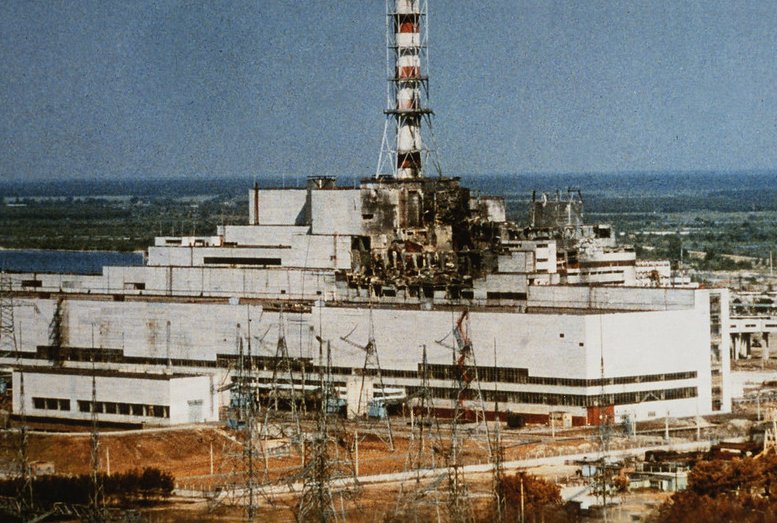 Oak Ridge National Laboratory, Flickr
Oak Ridge National Laboratory, Flickr
The Most Radioactive Place On Earth
The Chernobyl Nuclear Power Plant Exclusion Zone is one of the most radioactively contaminated places in the world today.
A Scientist's Dream
Because of the high levels of radiation and the lack of human interference, the Exclusion Zone is extremely popular with scientists—and it's becoming more and more popular with tourists.
A Glowing Green Paradise
Humanity really messed up the area around Chernobyl, but since we evacuated, the zone is a thriving sanctuary for both flora and fauna, with more biodiversity and thicker forests than anywhere else in Ukraine.
They Finally Shut Them Down
Ukraine finally agreed to shut down the Chernobyl rectors completely when the EU promised to help them modernize the sarcophagus and build new, safer reactors.
In The News
The Chernobyl Exclusion Zone saw fighting after the 2022 Russian invasion of Ukraine, and it has remained closed to tourists ever since.

